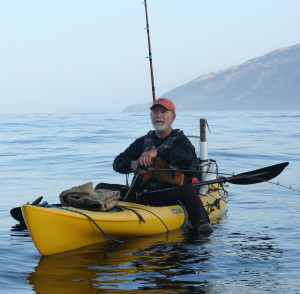
Drop your legs in the water to increase stability on a narrower kayak. It instantly lowers your center of gravity. Photo: Paul Lebowitz
Even the savviest waterman among us wasn’t born on a kayak. Try these intermediate to advanced tips for a better day of fishing.
Straddle for Stability: Got that tippy feeling? If you are on one of the narrower kayaks, anything 30-in or less, just drop your legs in the water. Straddling the ‘yak lowers your center of gravity and gives you plenty of stability for pulling on a charging yellow or dragging a big white seabass into the boat.
Increase your Paddle Power: Don’t be a one-arm wonder. The paddle is a lever – push with one arm while pulling on the other to more than double your efficiency. Learn to put the rest of your body into the stroke for even more oomph. Take a class or check out Kayak Fishing the Ultimate Guide by Scott Null and Joel McBride for the full forward-stroke scoop.
Face the Fish: Show a hooked fish who’s the boss. Keep a surging fish from running circles around your stern by pointing the rod tip at the bow. It harnesses the fish’s own energy to swing the ‘yak around to face it and keep the line in the clear.
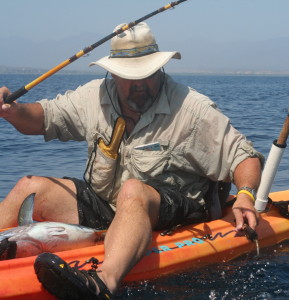
Don’t reel a fish right up to the tip guide. Instead, leave a lot of line out and point the rod skyward. The fish will skid right to the side of the kayak where it can be easily landed. Photo: Paul Lebowitz
Land that Lunker: Kayakers use long fishing poles – the extra reach is needed to get around the bow. It’s good for casting distance too. So how does one bring a fish boatside without reaching far out over the side – a good way to go swimming? Easy, leave a length of line out about as long as the fishing pole, then simply point the rod skyward. The fish will skid right to the side of the ‘yak. Yes, that’s high-sticking and can be hard on the brittle tips of some graphite rods – with practice it’s better to hold the rod in your off hand, slanted across your body at about 60 or 70 degrees.
Sneak through Wave Sets: It’s possible to sneak through bigger surf at a beach with a long foam zone, meaning the surf breaks a ways out from shore. The key is waiting for a pause between wave sets – and then pouncing on the opportunity to race into deeper water. Rather than standing with your boat in the slosh, where along-shore currents can make it tough to control, climb aboard your ride. Keeping your nose pointed at the foamers, slide carefully toward the impact zone – the point where the waves break, expending most of their energy. With practice, a kayaker can sit in front of the breakers all day, or as long as it takes to get that precious clear shot at the sea. This is a good skill to practice with your fishing gear high and dry at home – and don’t even think of trying it where the waves break right on shore.
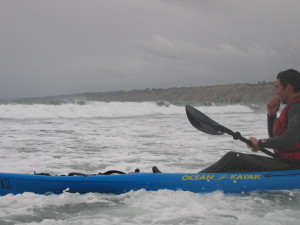
On a beach with a broad foam zone, climb aboard the ‘yak while still in the slosh. Then sneak up on the impact zone and spring out to deeper water when you spot a pause between waves. Photo: Paul Lebowitz
Surf Secret #2: Get back to shore without getting crunched. Paddle in on the back of a set wave – the biggest in each bunch. There’s usually a short lull between sets. Don’t forget to look over your shoulder as you rip in through the impact zone. If a bigger wave is gaining, you can brace, back-paddle, or spin around and take it head-on. Without the look-back, you’re set up for a yard sale.
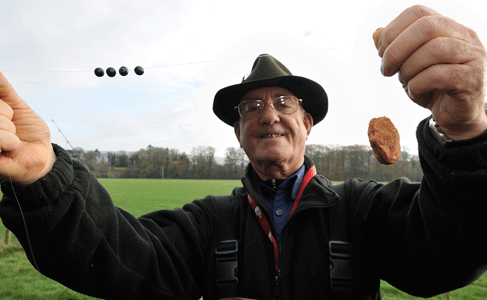
The Benefits of Travel and leisure
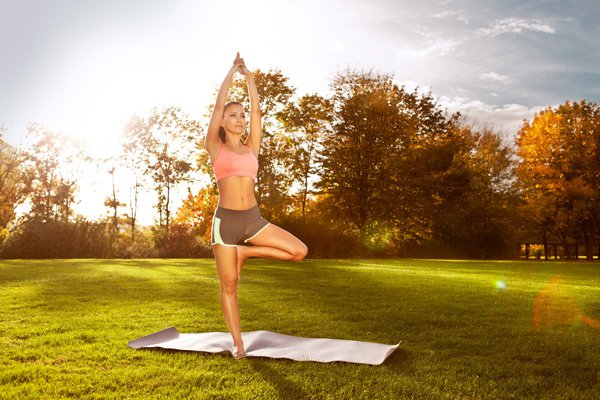
TASK 6: Reasons to fish in your town - Colorado Springs

Copyright © www.mycheapnfljerseys.com Outdoor sports All Rights Reserved